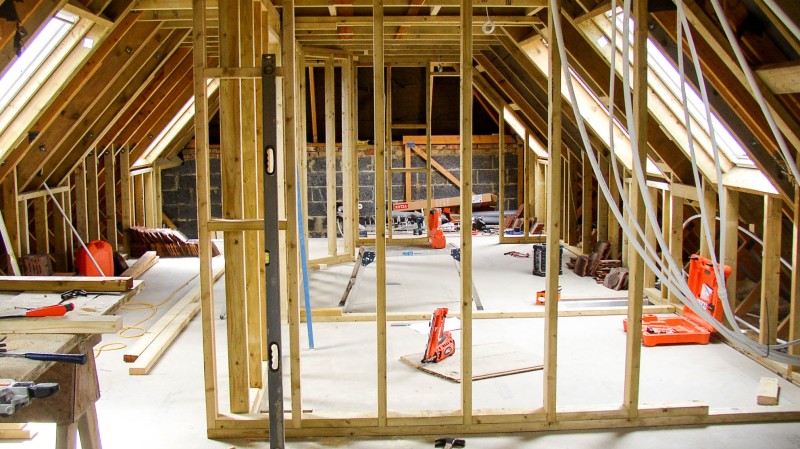You are here: Why has the cost of a loft conversion gone through the roof?
Since the outbreak of COVID-19 and its successive lockdowns, most of us have experienced an overwhelming need for additional space, whether we are craving a home office, an extra bedroom, a playroom or a state-of-the-art gym. For those homeowners not wanting to endure the stressful and costly process of moving house, where stamp duty alone can amount to tens of thousands of pounds, an attic conversion can provide the ideal solution for boosting the square footage of a property.
Extending upwards can also be an excellent way of adding value to a home, with conversions providing one of the best returns on investment when it comes to increasing the available floor space. Jeremy Leaf of London-based Jeremy Leaf & Co Estate Agents recently told This Is Money website that a loft extension could add 10 to 15 per cent to the value of a house. This is particularly ideal for those homeowners in cities where garden space is at a premium - giving a neglected attic a new lease of life could really pay.
There are caveats that come with this type of valuation. Every house has a price ceiling, which is the maximum amount that it can realistically sell for, given the location and type of property. However, if you currently have two bedrooms, while most other houses in the street have three or more, a loft conversion can bring your property in line with the competition, making it more appealing to buyers. As always, it is essential to do your research before embarking on any building project.
Home improvement magazine Real Homes puts the cost of an average loft conversion between £30,000 and £50,000 depending on several factors including size, the type of house, amount of available space, location and structural requirements such as staircase access. In fact, a simple conversion could start from as little as £15,000 for a basic room in the roof. Once you begin making significant changes like adding dormer windows or bathrooms, you will see the costs increase substantially.

But why are loft conversions more expensive right now?
The Covid-19 pandemic kicked off a boom in house renovations, resulting in soaring demand from homeowners, which shows no sign of slowing down. According to the Construction Products Association (CPA): “changes to the way people work, as a result of the pandemic, have positively impacted on private housing repair, maintenance and improvements, which has been the quickest construction sector to recover since the initial national lockdown.”
Although the market is very buoyant, the UK industry has been under pressure for several additional reasons, including materials shortages and sharp cost increase in imported construction products. The sharp recovery in house building around the world has led to global bottlenecks, soaring material costs and extended lead times for some key supplies such as roofing materials, concrete, timber, copper and steel. This has been further compounded by a worldwide lack of shipping containers.
But that’s not all. A drop in EU-born construction workers of more than a quarter in 12 months has started to have a knock-on effect on the UK market. The Federation of Master Builders, which represents small and medium-sized building companies, recently told the FT that more than a third of its members were struggling to recruit bricklayers and carpenters.
To compound the situation, there is also a UK truck driver shortage. Looking to be reaching a crisis point, the Road Haulage Association (RHA) says the shortage is currently up to 100,000.
What can homeowners do?
There is no doubt that it’s a difficult time in construction right now and there will continue to be increased costs, longer lead times and delays for the foreseeable future. It makes sense for homeowners to use the time well by researching thoroughly and planning effectively.
There are many resources available online with advice on cutting the cost of a loft conversion, helping to ensure costs don’t spiral out of hand. If you do decide to take the plunge and unlock the potential in your dusty, old attic, it’s also worth checking out this handy guide with ideas and inspiration.
If you are looking to make some home improvements, you may find some of these services useful
Building Regulations
Find details of local experts who can help with Building Regulations
Architectural Design Services
Find local Architectural Design experts
Builders
Find local help with a building project
Structural Inspections
Find an expert to carry out a structural inspection
Building Surveys
I want a local surveyor to do a Building Survey for me

